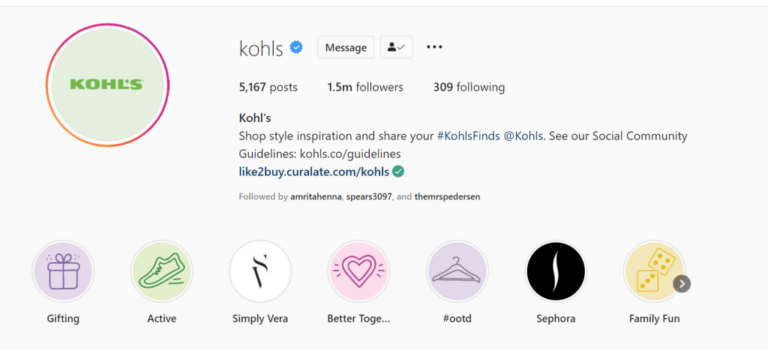
In the modern e-commerce environment, brand image and identity are everything — particularly if you distribute through online retailers. You need a solid brand to stand out from your competitors and capture your customers’ attention. There is a preconceived notion that retail teams can do little about their brand’s image if their products are sold through third-party channels. However, this assumption is not true.
Brand image is about delivering a consistently positive brand experience end-to-end — from social media to packaging, from your website to customer support. Right in the middle of this experience is your retail distribution, so your retail team should strive to maintain consistency.
It is true that, as a brand, you can’t directly edit product pages in a retail configuration. However, it’s important to know that:
- This does not mean that you can’t do anything about product page content.
- More importantly, brand image in online retail is about a lot more than product content.
In this article, we’ll look at the different levers available to retail teams when it comes to improving brand image.
Set Up a Selective Distribution
Selective distribution is a kind of distribution strategy that lies between exclusive and intensive distribution. The strategy involves selecting distributors and online retailers based on a specific set of rules. When your brand adopts a selective distribution strategy, benefits include:
- Ability to maintain and enhance your brand image by only associating with trusted online retailers who are in line with your strategy
- Improved market coverage, which positively impacts your brand awareness.
You should collect feedback from your customers and gradually phase out online retailers that undermine your brand perception. A selective distribution assures that, in the long run, you are only working with partners you can trust to deliver adequate pre- and post-sales services and a positive shopping experience.
Negotiate and Monitor Product Assortment
Building product ranges and carefully planning your assortment enhances how shoppers perceive your brand. It’s key that consumers are able to pick from a wide range of variations (e.g., color, size, capacity). They should also have the opportunity to buy accessories alongside the main product.
Most online retailers tend to favor the SKUs with the highest margin and turnover. But your brand is not just about its best-selling 20%. And online retailers may fail to get that bigger picture if they just analyze profits at the SKU level.
Your e-commerce team should set objectives in terms of share of assortment, then negotiate with online retailers individually. Most importantly, they should monitor how the assortment gets implemented and quickly identify discrepancies in the negotiated assortment.
Remedy Critical Out-Of-Stocks
Obviously, out-of-stock situations will cost you sales. But it does not stop there. Your products are less likely to show up in search results while they’re unavailable, and even after they come back in stock, they could still suffer from a reduced sales velocity. On top of that, out-of-stock listings make your brand look unprofessional and search algorithms will push substitutes from your competitors.
Your e-commerce teams should know that online retailers might be slow to react. That’s why you should have systems in place to alert you every time a critical out-of-stock happens.
Identify Gray Market Sellers
The unauthorized sale of branded products occurs within the gray market. To protect their image, brands cannot turn a blind eye to the potential impact of gray market sellers. When gray market products are readily available to consumers, especially online at huge discounts, it is likely to cause brand damage.
Additionally, gray market sellers often apply their own service rules, rather than the brand’s protocol for pre- and post-sales services. They may be selling factory rejects or cross-border imports. These under-the-radar transactions could sabotage your team’s effort to build a high brand positioning.
By actively scouting the market for gray sellers, you should be able to identify the leak in your distribution channels and protect your brand image.
Set Up and Enforce a MAP policy (Where Applicable)
Minimum advertised prices (MAP) policies are only legal in some countries (like the US). Many brands use them mostly for profit and margin reasons. Indeed, they do help to slow down intra-brand competition. But MAP policies also help protect brand image.
Price is a large part of how customers see your brand. When online retailers heavily drop the price of your products, or use them as loss leaders, it erodes the perceived value of your brand.
MAP policies only work if they are enforced, which is notoriously hard to do manually. That’s where retail solutions with efficient price monitoring come in handy.
Plan, Execute and Monitor Synchronized Promotions
While unending discounts are detrimental to your brand image, promotions are still a great way to draw attention to your products and boost sales. They can be especially efficient if your entire network executes them at the same time.
A way to do this is to plan promotions that make sense business-wise, then offer your resellers the opportunity to opt-in. Of course, the promotion should come with a sellout allowance from your brand.
During the promotion period, it’s crucial that you check whether the online retailers applied the discount — and ended it at the designated time. Sometimes, online retailers forget to end a promotion.
Answer Priority Reviews
Responding to priority reviews could be a crucial way to stay in contact with all your customers. Well-thought-out and courteous responses help your customers feel acknowledged while impressing potential customers.
The benefits of responding to reviews are actually twofold:
- Attracting and engaging new customers with attentive and thoughtful responses
- Boosting retention rates, which can have a considerable impact on your business’s bottom line
Customer reviews also strengthen trust and give credibility to your brand. Consider monitoring reviews a necessary, strategic action to sharpen your online appearance.
Assure Product Listing Quality
And last but by no means least: product content. If you don’t ensure product listing quality, your products are less likely to rank well and you could lose significant sales to your competitors. Content could also massively influence conversion rates and perception. By incorporating content, such as comparison graphs or lifestyle photographs, you can define your brand voice and highlight the core values and benefits of your brand.
In particular, you want to make sure that product titles, images, descriptions and rich content are all up to your standards.
On sites like Amazon, as a vendor, you can edit pages for your products, so there is no excuse for poor content! On other sites, the situation can vary widely, but it’s important that you have a clear vision of where product content is lacking. To find out how good content can signify your online presence and what can you do to achieve good content, read this 30-page handbook from Brand Analytics.
These eight actions take into account the essential elements in e-commerce monitoring metrics. And the great news is that you can have a lot of control over them! From setting up distribution channels to auditing product listings at online retailers, your team will be the key to improve your brand sales and your online reputation. Get in touch with our team today, to see for yourself how we can help embrace and grow your online presence.



![[Guest Blog] Reach a Global Audience With International SEO](https://thegateway.net.au/wp-content/uploads/2021/02/guest-blog-reach-a-global-audience-with-international-seo-768x340.jpg)

